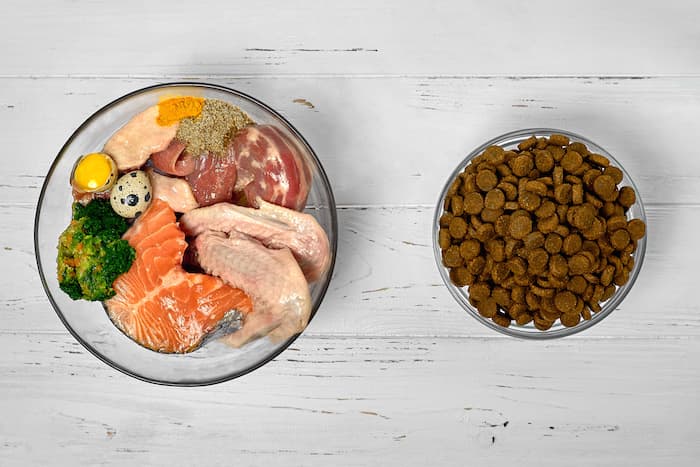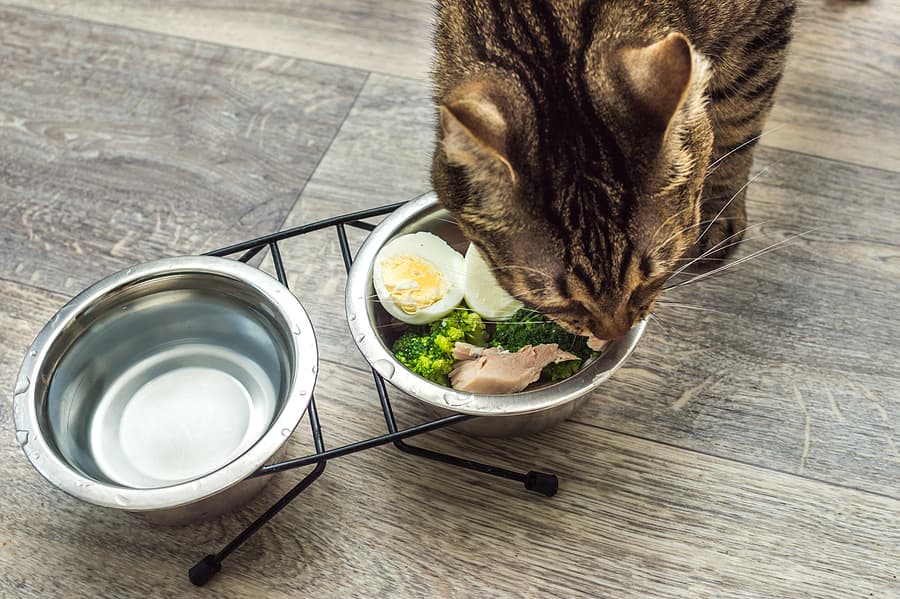Raw feeding provides a vast array of benefits to your pets. Because the diet is raw, it’s less processed, more balanced, and more natural. Because of these, your pets receive the necessary vitamins and minerals for their growth and improved health. In addition, a fresh diet improves skin complexion and reduces your pet’s odor.
Suppose you own a cat or dog. In that case, you may want to try feeding them with a well-planned raw diet. For that purpose, you may need a comprehensive guide on starting and doing this. Here’s an article to get you started. So, read on!
- Keep The Fat, Protein, And Carbohydrates Balanced
For your pets, the staple diet is meat. This has the essential protein and fats to keep your pets healthy. For this purpose, you may feed your pets raw meat or fish from a grocery store or meat shop. You may also add carbohydrate-rich food, such as cereals and crops, for improved pet nutrition.
Fats and protein should always be present in your pet’s diet to keep their bones and muscles strong, provide them with energy, and ensure proper metabolic processes. While carbohydrates aren’t as needed as fats and protein, you may still consider them as it enhances your pet’s immune system.
- Ensure That The Diet Contains A Good Amount Of Minerals
Minerals in your pet’s raw diet reduce the risks of diseases, especially bone- and joint-related types. In some cases, pets lacking in minerals show excessive thirst and drooling. You may choose bony meat for your pets or add beans, wheat bran, and vegetables to their diet to prevent this.
- Familiarize Yourself With Your Sources Of Calcium
You need to consider opting for meat with bones for your pets as it provides much-needed calcium. Other sources of calcium for your pets are yogurt, dairy products, fish and chicken, and vegetables. In most cases, you need to ensure that your pet’s diet is rich in calcium to avoid mobility issues caused by bone and joint problems.
- Add Organ Meats
Aside from protein, organ meats can provide vital nutrients, such as B vitamins. In addition, they could be a good source of minerals, including magnesium, iron, phosphorous, and iodine. If you have limited knowledge of the organ meats to consider, you may try the following:
- liver
- lungs
- kidneys
- stomach and intestines
- brain
Organ meats are combined with other raw food for a balanced diet in many cases. For instance, if you want to increase the B vitamin content of a carbo-rich meal, you may add liver slices. Some pet owners also pre-cook organ meats before mixing them with a raw diet to ensure they’re easy to chew and consume.
- Add Fruits And Vegetables
Although you may be thinking that your pet’s meals are purely meat-rich, you may consider adding pet-friendly fruits and vegetables to their diet. Apples are excellent sources of fiber, as well as vitamins A and C. Bananas could provide quick energy boosts. Blueberries contain antioxidants that reduce the risk of cancer and cell damage.
In vegetables, you may consider supplementing your pet’s meal with carrots. These veggies can provide Vitamins A, C, D, and E. They could also offer fiber and iron, ideal for cleaning your pet’s teeth and gums when eating. You may also consider adding celery, especially if your pets have a terrible odor.
- Check The Vitamin Content
Aside from the mineral content, you should also consider the vitamin content of the raw food. This could be challenging. You may need to do a little research about the food you ought to give compared to ready-to-eat kibble whose nutritional content is already listed when you read the label.
To check a meal’s vitamin content, you may need to read about the nature of the food components. Leafy veggies are usual sources of vitamins A, C, E, and K. Citrus fruits are rich in Vitamin C. In contrast, yellow veggies are rich in Vitamin A.
- Consider Your Pet’s Size And Age For Serving
On your pet’s end, you may consider their size, especially if it’s linked to their health condition. You may choose raw food with low sugar and calorie count for overweight pets. Pets with a history of cardio issues should avoid consuming raw fatty meals.
Furthermore, you should feed soft meals to pups, kittens, and old pets. If they find it difficult to consume the raw meals, you may consider pre-cooking them or preparing their soft versions.
Final Thoughts
Your pet’s diet is one of the important things you need to be serious about. In deciding whether or not to start raw feeding, you may first consider your pets’ condition. Consider the diet that could make them more comfortable while satisfying their needs.
If you wish to proceed, you could begin raw feeding gradually. You may start supplementing your pets’ kibble with chunks of fruits and cereals. After getting used to it, you may increase the amount and add more complex types of meals. Lastly, think about the tips in this article so you can make the most of raw feeding.



